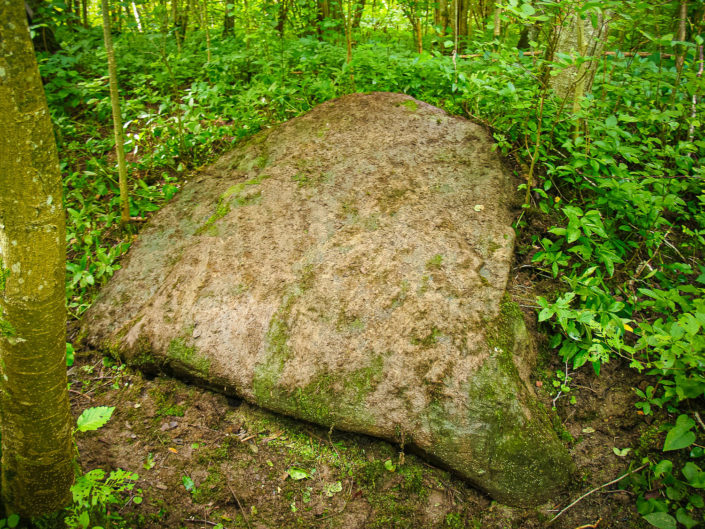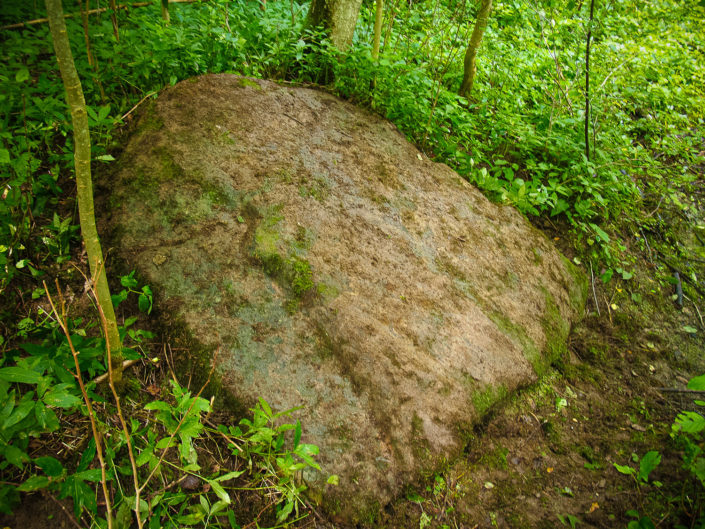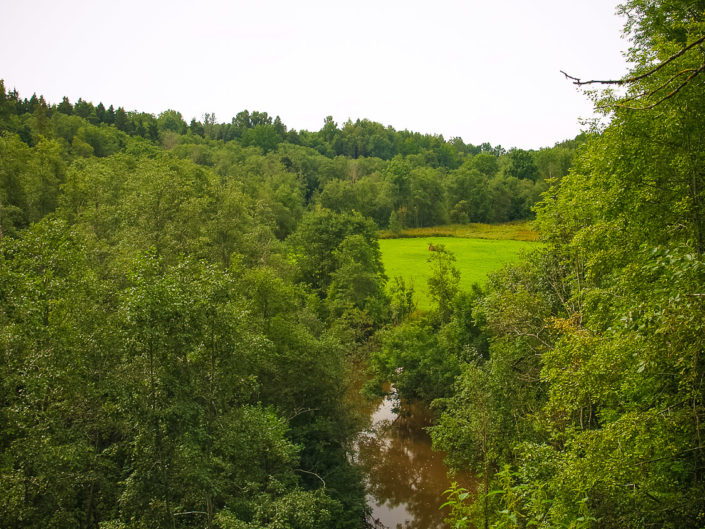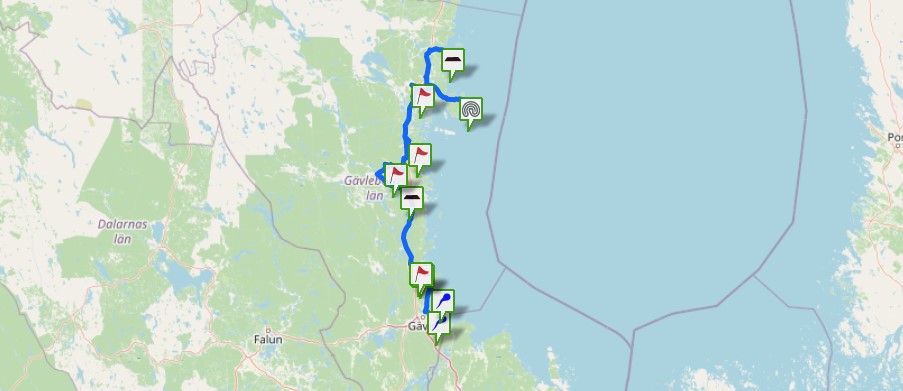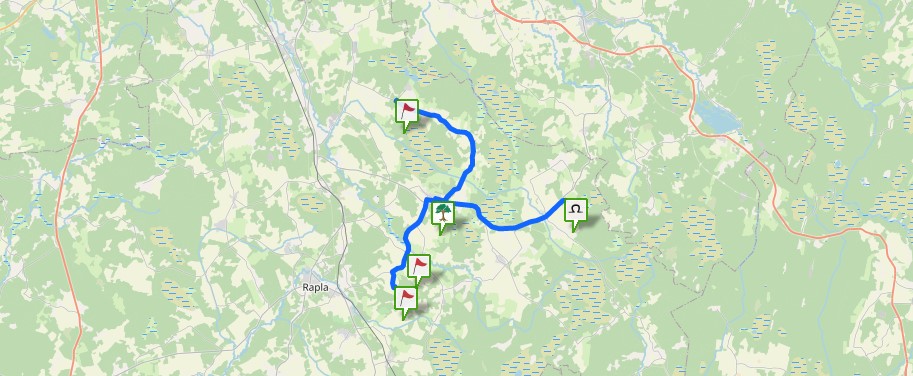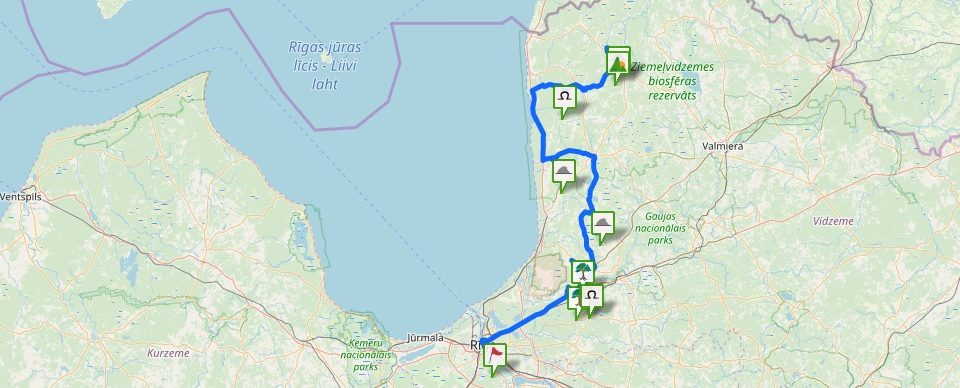The surroundings of the stone are covered with bushes and trees. The stone’s surface is flat and slanting towards the river, next to it there is the oxbow lake. The edges of the stone (around 2.1 x 2.0 x about 0.3 m) are crumbled or beaten off, however, the surface is rough, covered with green moss. No cavities were visible in the stone. It might be that the stone had once rolled down or been rolled down from the brink of the Amula River valley; as likely the stone might lie in its original place. This is the place where the Amula and Imula River approach each other the closest. According to the legend, the Devil wanted to draw the rivers together. Mazskudras Devil’s Heel Stone and the nearby Zāģeru Devil’s Stone on the other side of the river as the elements of the sacred scenery might have had some role in these mythological tales.
- Behind the Pūces krogs Inn and Matkule Strīķi homestead the inlets of the Abava River Amula and Imula approach closely together with some three hundred steps between them. Old people say that there the Devil in his wish to merge the inlets tried to grab the land with his big nails and bring it away. When he had grabbed the land between the two rivulets in both of his hands, and had got a fast hold of it and raised high, a rooster crowed and the Devil let the grab go and left it as it stands there today. “Kurzeme. Novadu teikas”. Compiled by Laura Rezakova. Jāņa Rozes apgāds, 2008, p. 75.
- At some place in Matkule parish of Tukums district Imula and un Amula Rivers run close together – approximately 280 metres from each other. A legend says the following about the place: Once the Devil had intended to merge both rivers – the Amula and Imula. He was running from somewhere around Laute. The Devil grabbed land and kept filled up it into a sack. He had grabbed a big part and a quite large valley had already developed. The bag was almost full when a rooster started to sing. Without saying a word the Devil picked up the sack, left the work undone and dashed away. However, with the first pull the sack did not stand the weight and a part of the land and stones fell out onto the other bank of the Amula River where they can still be seen today. The rivers, however, have not been merged up to this day. Latvian Folklore Repository 1840, I. Jūlijs Birzenbergs, in Matkule of TukumS, 60 years old; recorded by V. Birzenberga, 1948; Latviešu tautas teikas. Izcelšanās teikas. R., 1991, P. 169.
The location of the Mazskudras Devil’s Heel Stone is difficult to find without the help of somebody who knows the place. In the Mazskudras homestead the people know the location, however, they would not like it to be involved in larger tourism activities. There is no information about the stone in otherwise rich materials of Kandava Tourism Information Centre.
